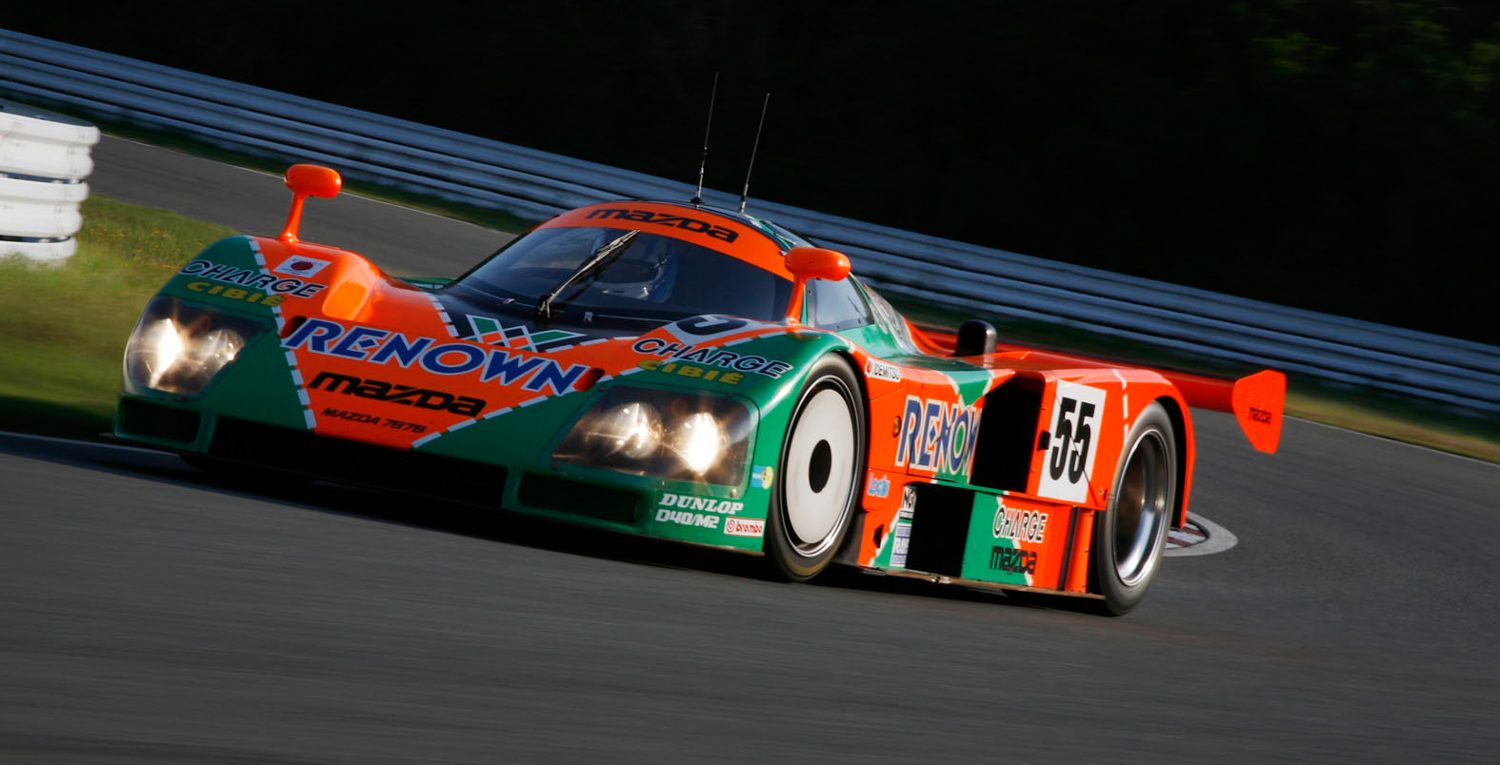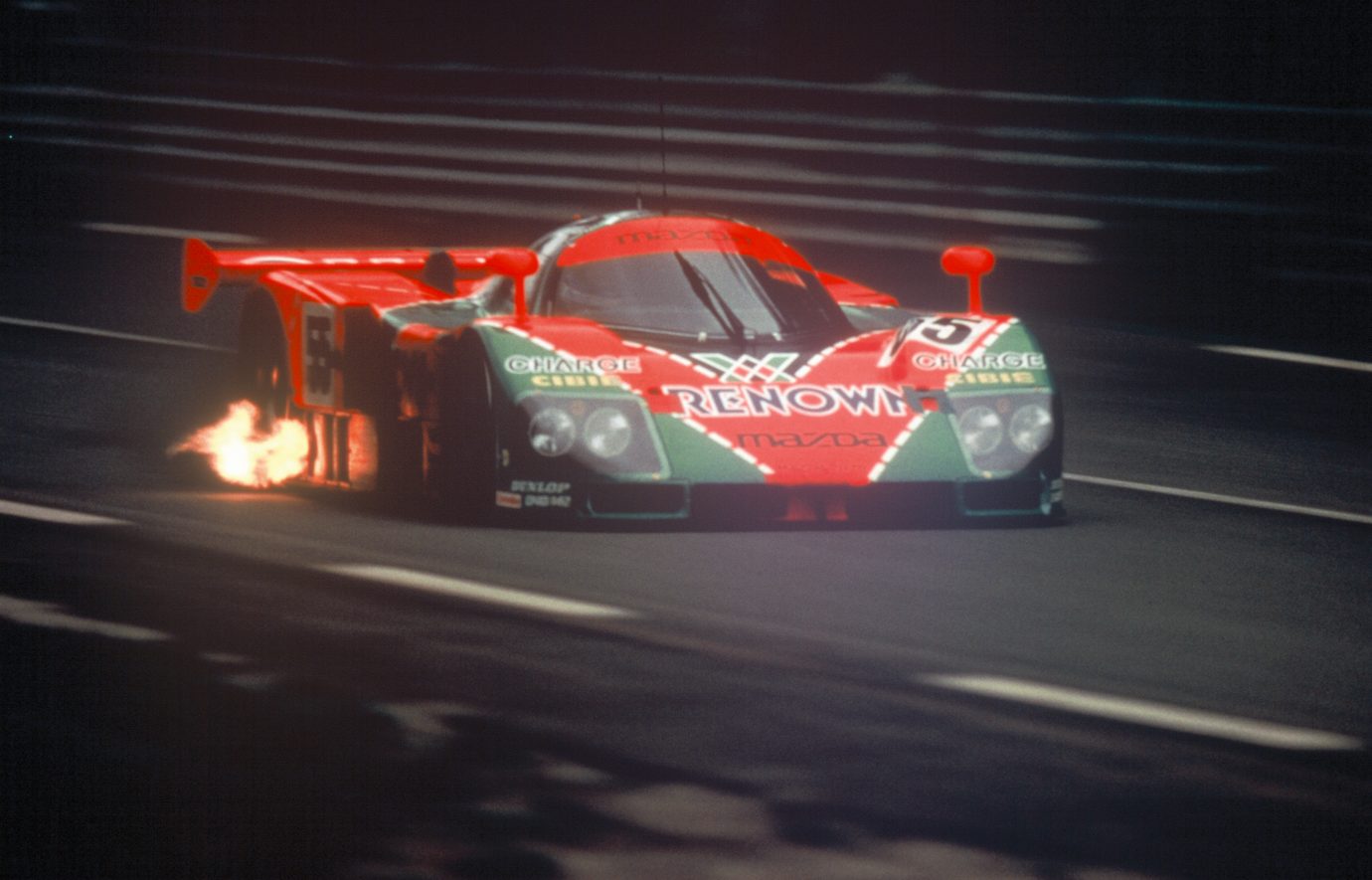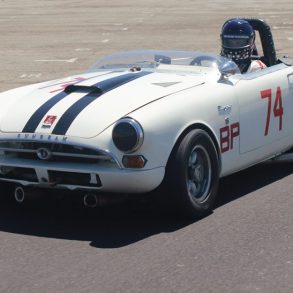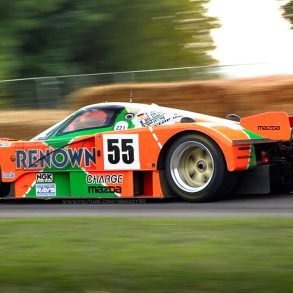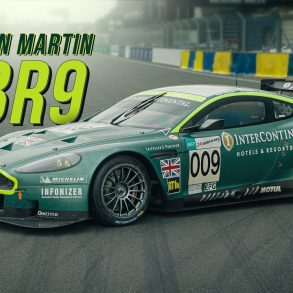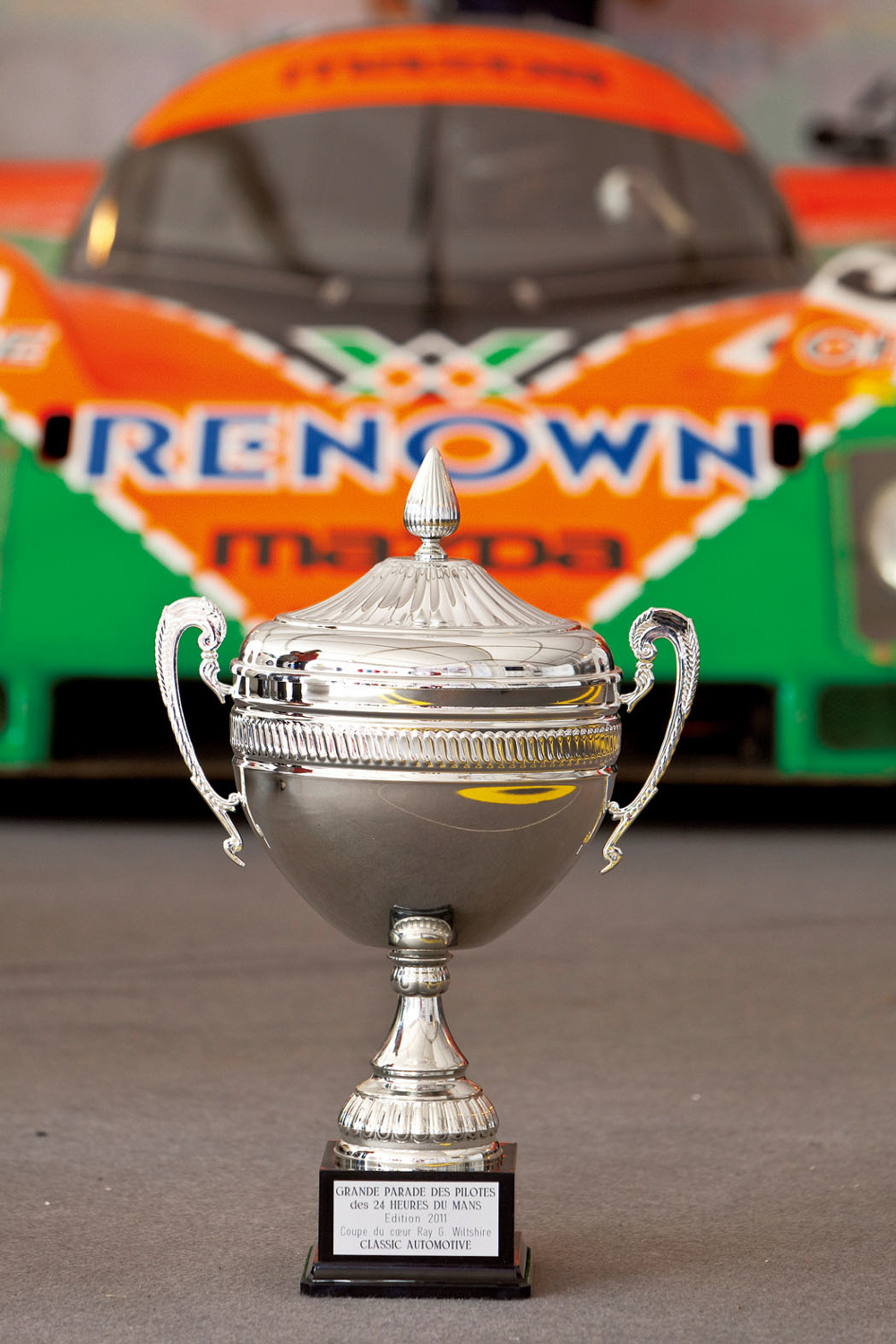
The number 55 Mazda 787B had covered 362 laps of the famous French circuit and over the course of its 28 pit stops the winning Mazda had received just one oil top up, a change of brake discs and pads, plus a nose change. Aside from that, the 700bhp four-rotor R26B powered 787B had just required fuel and tyres as it faultlessly proved the reliability, efficiency and performance of Mazda’s unique rotary engine technology.
Sharing the winning car with Herbert were fellow Formula One drivers Volker Weidler and Bertrand Gachot, and for this trio of young chargers it was a largely uneventful race. A strong start saw Weidler make places from the 787B’s 23rd place on the grid and by 6pm number 55 was into the top ten. By the halfway point of the race at 4am the Mazda’s pace and reliability meant it was running in third place, and with three hours to go, the Mazda was in second place when the leading Mercedes-Benz suffered engine troubles and retired.
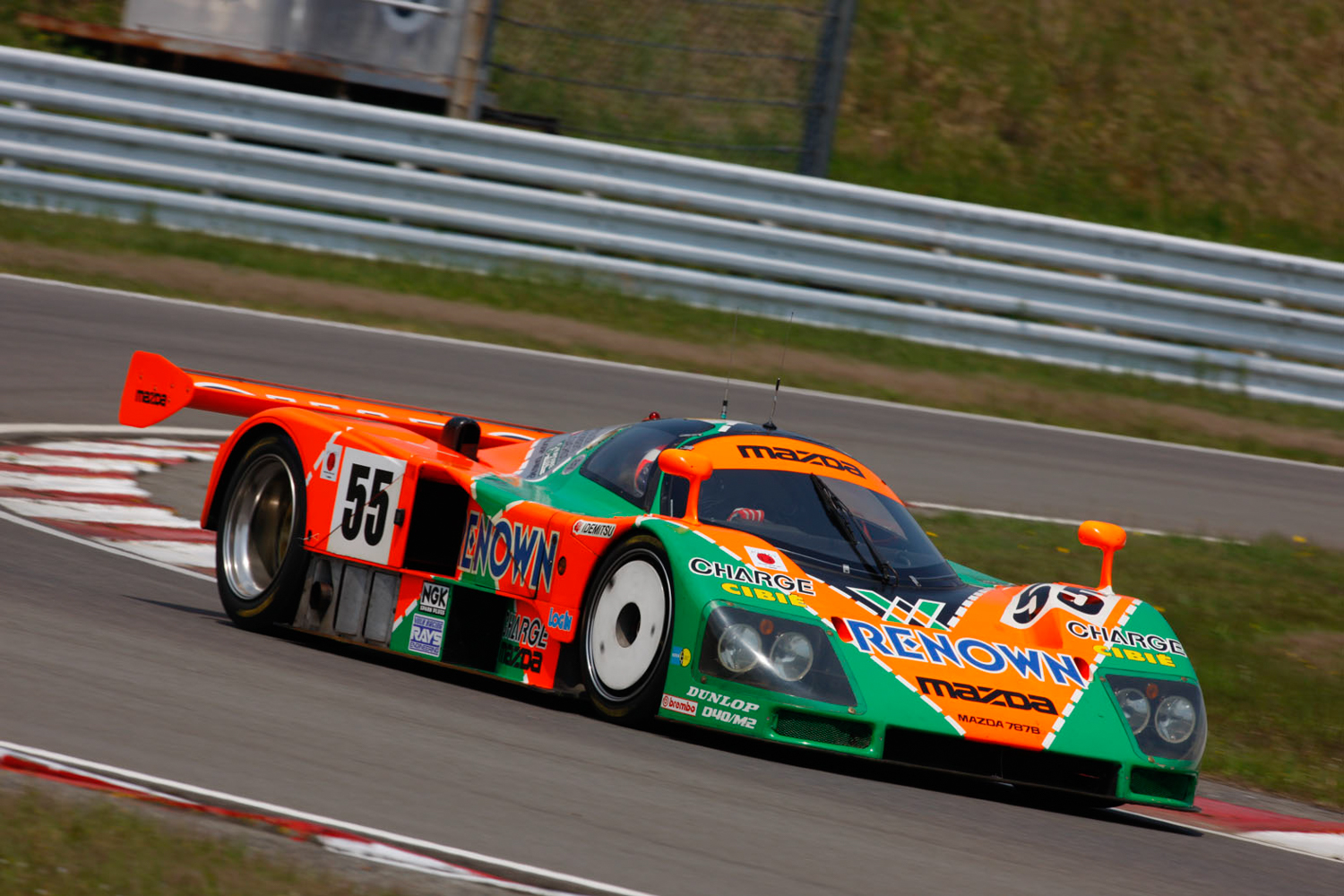
This left the number 55 Mazda 787B to click off the laps and cross the line to take overall victory for Japan in a race that Toyota and Nissan had tried to win throughout the Group C era. Yet it was the relatively small manufacturer from Hiroshima and its rotary engine that had taken the first outright win at Le Mans for a Japanese brand. Even more poignantly, Mazda already knew the rotary engine would be banned from Le Mans in 1992, so the 1991 victory was the last chance to win with a rotary.
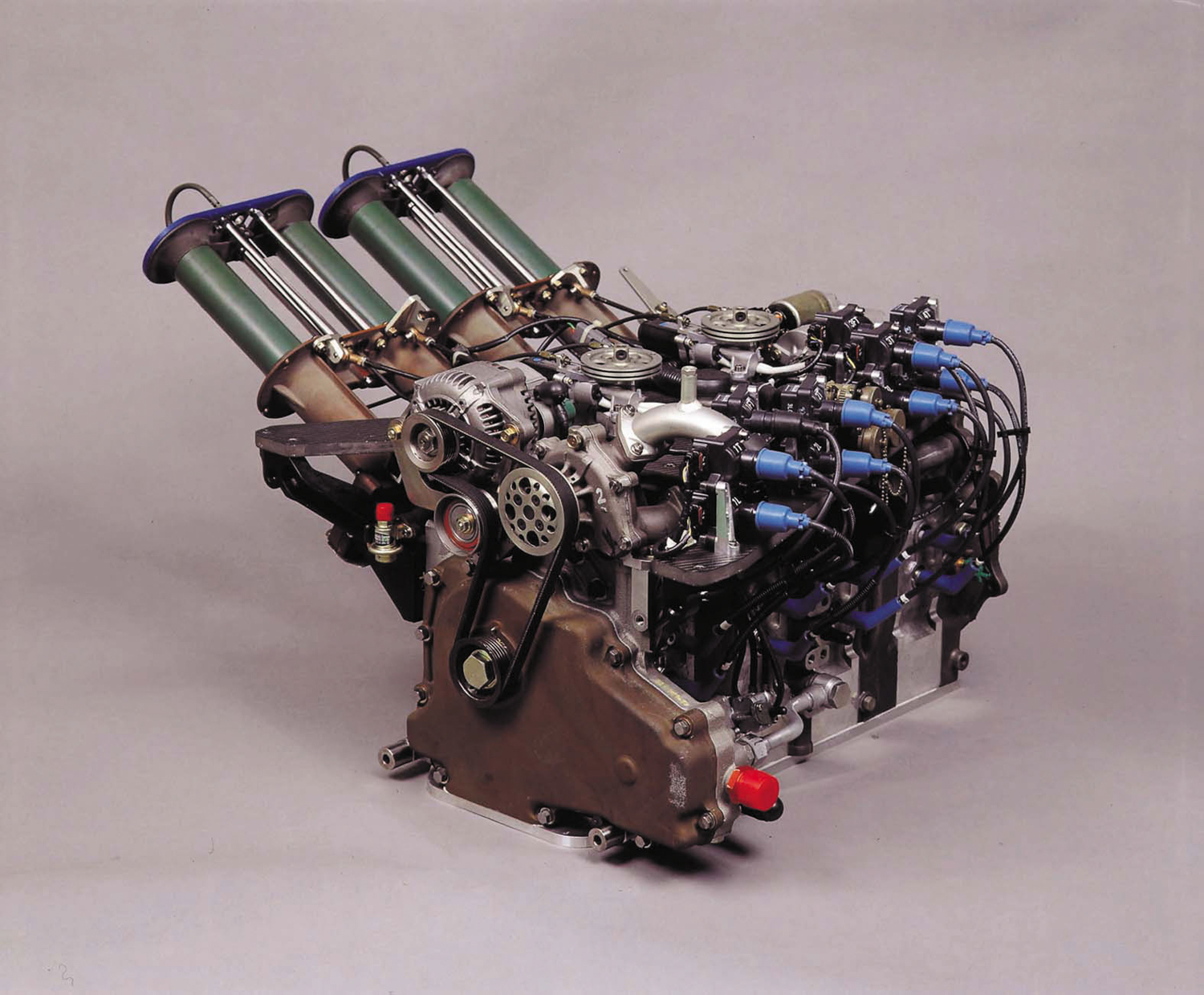
With a chassis designed by Briton Nigel Stroud, the Mazda 787B was also the first car to win Le Mans with carbon brakes. To top off a great race, the sister number 18 Mazda 787B finished in sixth with the older number 56 Mazda 787 in eighth – a huge achievement for Mazda and culmination of a story at Le Mans that began 21 years earlier.


The first time the Mazda name appeared on the Le Mans entry list was in 1970 when Belgian outfit Team Levi’s International entered a Chevron B16 powered by a 200bhp twin-rotor Mazda 10A engine. The 1970 race was famous as the year that for safety reasons the organizers ceased the traditional run across the track for the starting drivers.
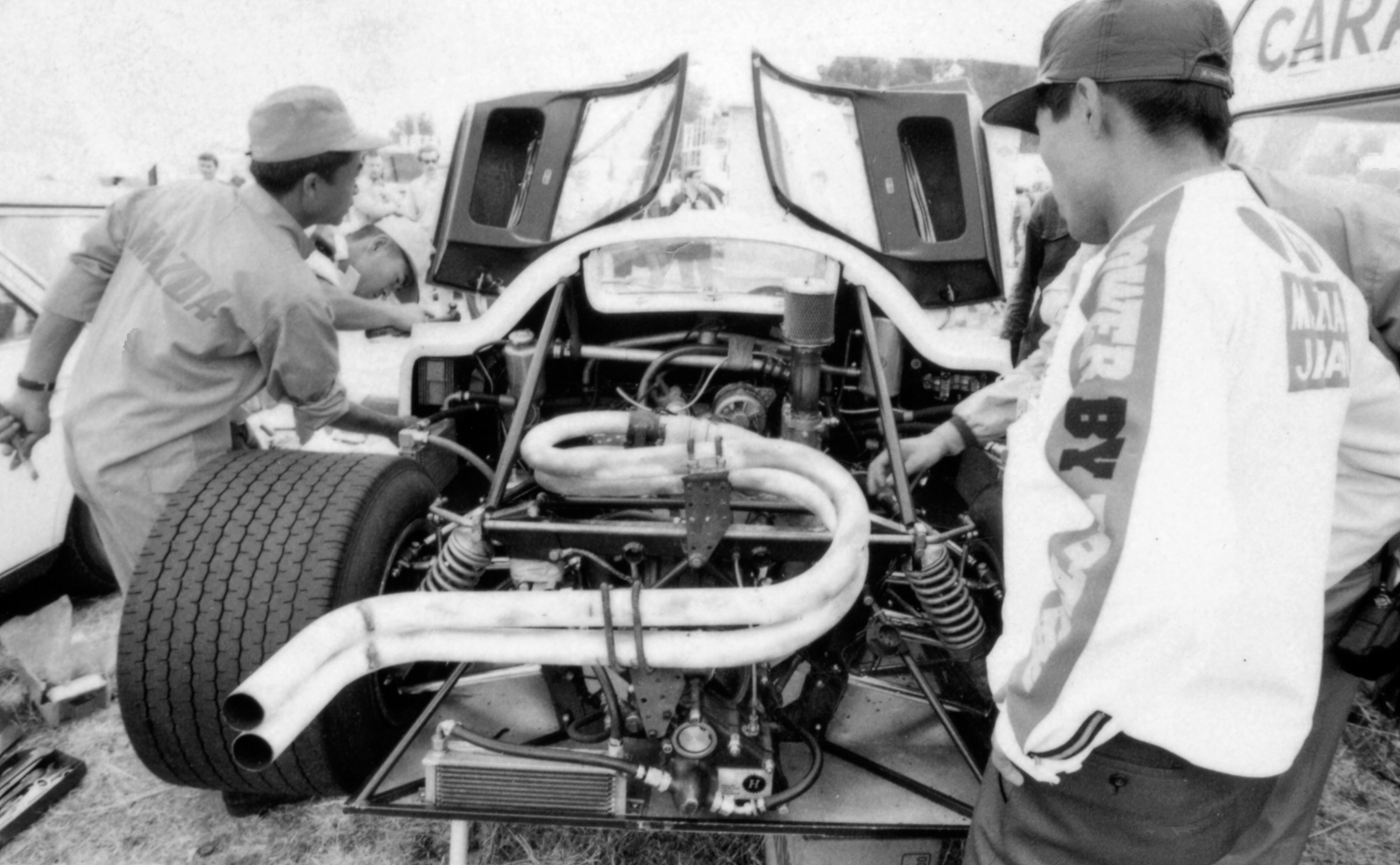
It was also the year that Steve McQueen filmed the race for his iconic 1971 movie “Le Mans”. In fact, an eagle-eyed movie watcher will spot a brief passing shot of the Chevron-Mazda in this cinema classic. Sadly, in the race itself the little Chevron retired early in a race also made famous by torrential rain and the first overall victory for Porsche.

After an absence of two years, a Mazda powered car returned to Le Mans in 1973 – the Japanese Sigma MC74 chassis was powered by a 260bhp 12A rotary engine. It qualified 14th but retired during the night with broken suspension. The little Japanese Sigma team returned in 1974 with an updated MC74 chassis powered by a 12A rotary. The all Japanese driver crew included Yojiro Terada who went on to compete at Le Mans 18 times in Mazda powered cars, taking 4 class wins in his career.
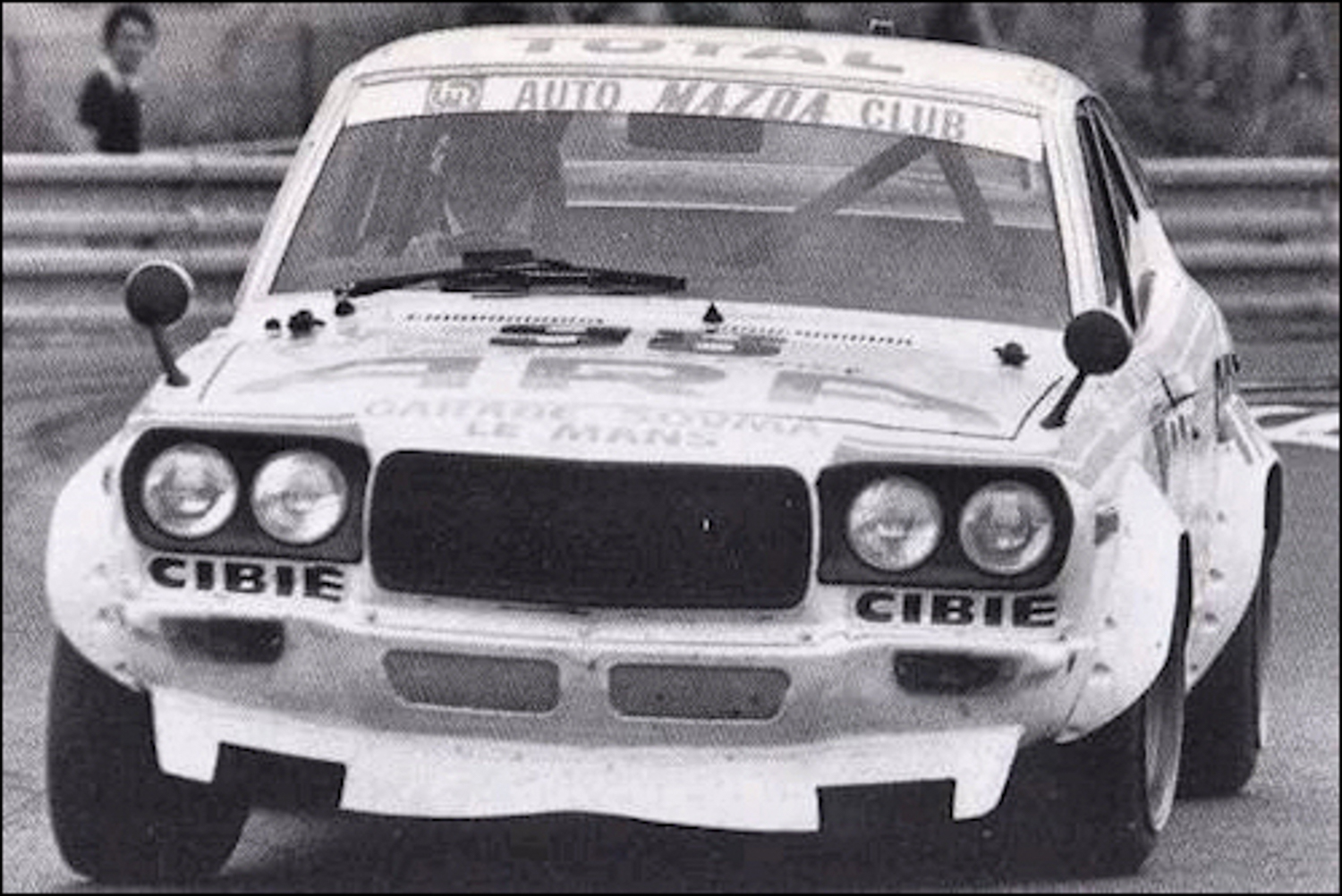
In 1975 a privately entered French RX-3 took part in the Le Mans 24 Hours, having failed to qualify in 1974, after the Mazda powered Chevron and Sigma cars of the early ’70s, this was the first ‘all Mazda’ chassis and engine combination to race at Le Mans. After a four-year gap a Mazda was back at Le Mans in 1979 with an RX-7 entered by Japanese dealer Mazda Auto Tokyo run by Takayoshi Ohashi – a man who would become instrumental in Mazda’s later success at Le Mans. Powered by a 258bhp 13B rotary, it failed to qualify by just 69/100ths of a second. However, this was the first of four years when RX-7s appeared at Le Mans.
The 1980 Le Mans saw another dealer entered RX-7 at Le Mans – this time by a U.S. dealer from New Jersey. This privateer IMSA RX-7 had a 12A engine and finished the race in 21st place overall – making it the first Mazda and the first rotary engine car to be classified at Le Mans. The British Tom Walkinshaw Racing (TWR) team already had a relationship with Mazda and the RX-7 – running ‘touring car’ specification RX-7s in the European and British Touring Car Championships – taking the BTCC title in 1980 and 1981, plus victory in the 1981 Spa 24 Hours. So they were the obvious European partner for Mazda Auto Tokyo to enlist to help with a Le Mans entry in 1981. They entered the 1981 race with a pair of cars with a mixed Japanese/British driver line up in each car. Entered in the IMSA-GTU class, the 13B powered ‘long tail’ RX-7 253s did not finish. In the 1982 race a pair of IMSA-GTX spec RX-7 Type 254s were entered for Le Mans and the number 82 car finished in 14th place overall. But for all its success in touring car racing, American sportscar racing and rallying, the regulations at Le Mans never really allowed the RX-7 to challenge for glory.

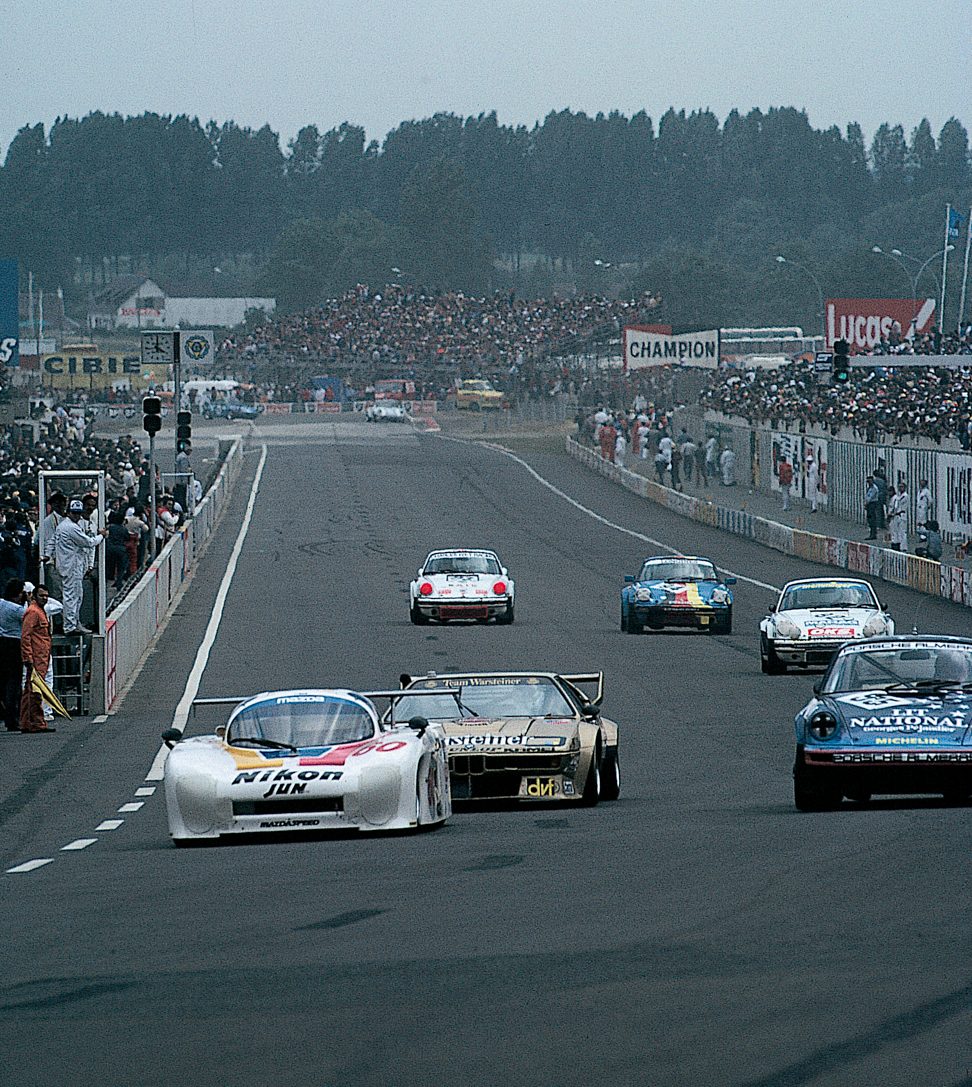
So for 1983 it was all change for Mazda at Le Mans. Takayoshi Ohashi’s Mazda Auto Tokyo team had been renamed Mazdaspeed in the early ’80s and in 1983 it became a subsidiary of Mazda. With this the effort took a step up with a bespoke car built specifically for Le Mans. Designed to compete in the secondary class of the new Group C regulations, the Mazda 717C wouldn’t be gunning for overall victory but class honors in the new Group C Junior class. The diminutive 717C weighed just 800kg and was powered by a 310bhp 13B rotary, while its covered rear wheel spats helped reduce drag giving it a slippery 0.27cd drag coefficient. With Mazda looking for a European partner to help run the cars, Silverstone based Alan Docking Racing was enlisted to help. Two cars were entered for Le Mans – one with a full Japanese line-up and the other with British stars Jeff Allam, Steve Soper and James Weaver. Interestingly, another Group C Junior entrant had a Mazda engine – a British Harrier chassis powered by the same 13B engine as the diminutive 717c factory cars, but this British team failed to qualify.

However, for the factory team it was a different story and the 19th June 1983 saw Mazda take its first silverware at the Le Mans 24 Hours with victory in the Group C Junior category for Takashi Torino, Yojiro Terada and Yoshimi Katayama in their Mazda 717C – they even finished 12th overall.

The 1984 Le Mans saw the biggest Mazda effort yet. The factory entered two 727C cars in the renamed Group C2 class. With improved aerodynamics, the 727C was an updated version of the 1983 Mazda 717C. These Mazda 727Cs were joined by a pair of sleek Lola chassis C2 cars entered by American Jim Busby. They were powered by the same twin-rotor 13B as the 727Cs. These BF Goodrich backed Lola-Mazda entries featured the sponsor’s experimental radial road tyres. And the four-car effort saw another class win, as the BF Goodrich Lola-Mazda of Yoshimi Katayama, John Morton and John O’Steen finished 10th overall and won Group C2. The other Lola came third in class, with the two 727C Mazdas fourth and sixth in Group C2.

For the 1985 Le Mans Mazda entered two twin-rotor Mazda 737Cs in the Group C2 class. The number 85 car had an all Japanese driver line up and came third in class. The rotary engine had again showed its potential and Mazda now had plans to step up a class. With the aim of challenging for higher overall positions in the race, the 1986 Le Mans saw Mazda move up to the IMSA GTP class with the new Mazda 757. The start of a plan to aim for overall victory, the engine increased to three rotors and the chassis was all new. In their first year neither 757 finished after issues with their Porsche transmissions, but penned by British designer Nigel Stroud, the Mazda 757 was a statement of intent. One that came good in 1987 when the Mazda 757 of David Kennedy, Pierre Dieudonne and Mark Galvin won the IMSA GTP class and finished seventh overall in the 1987 Le Mans.
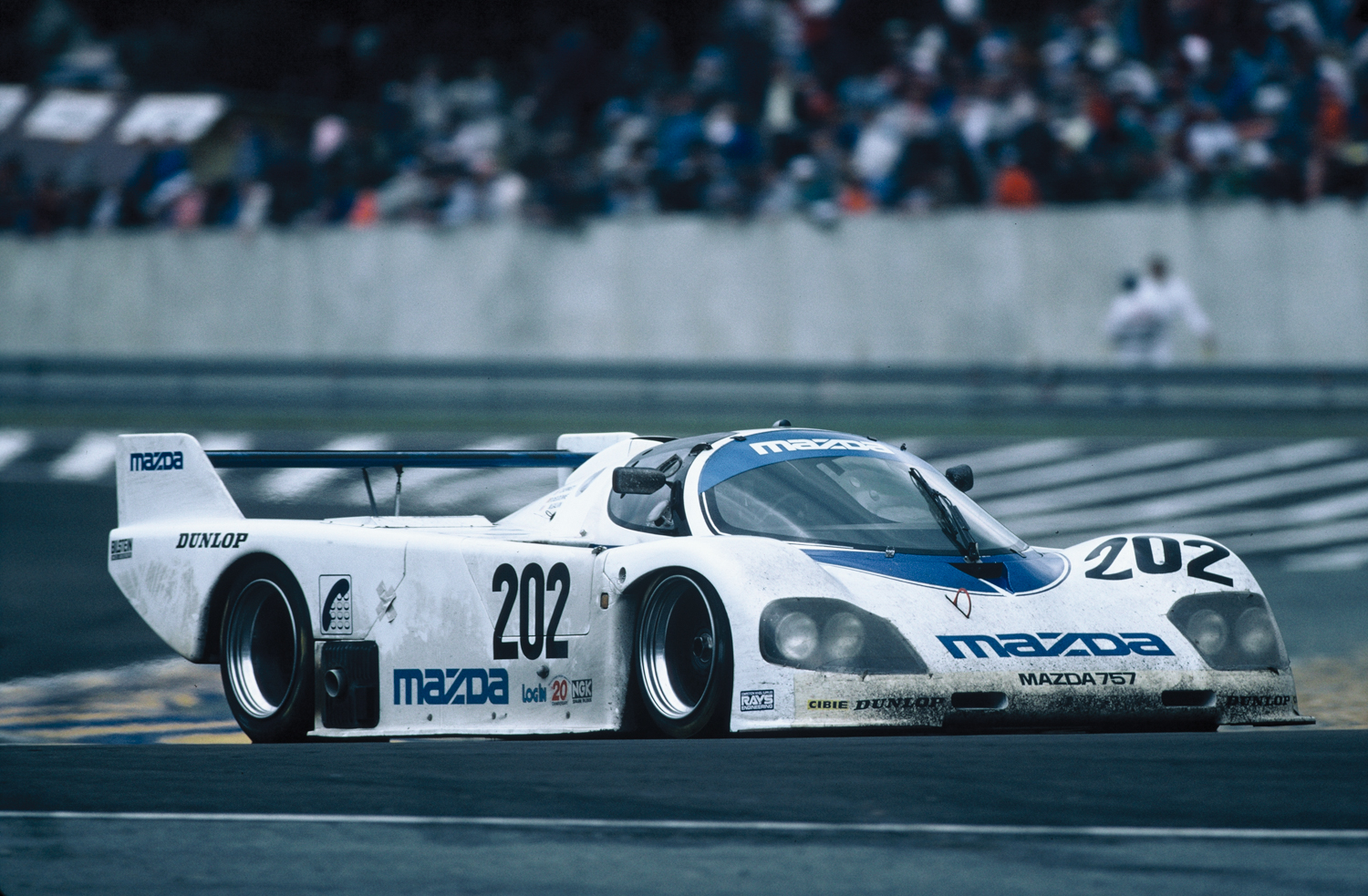
The 1987 winning Mazda 757 was a steppingstone to the even faster and more powerful four-rotor Mazda 767, which made its debut alongside a solo 757 in 1988, and it was the older 757 that took another class win. In 1989 two updated 767Bs and one 767 were entered. The number 201 767B won the GTP class and came seventh overall with the 202 sister car in 10th overall, while the older 767 came home 12th. A strong year for Mazda, the 1989 Le Mans was a big success.

For Mazda the successful trend of bringing two all new cars and one of the previous year’s chassis as a back-up continued in 1990 with an entry for a pair of new Mazda 787s (cars 201 and 202) and a solo Mazda 767B wearing number 203 The new for 1990 Mazda 787 featured a carbon fibre chassis and the new 26B four-rotor engine, which was lighter, smaller and more economical than the 13J it replaced. It featured variable inlet pipes and each rotor had three spark plugs. The 1990 race saw the new 787s suffer electrical and transmission issues, but the number 203 Mazda 767B finished 20th and won the GTP class. With the announcement that rotary engines would be banned at Le Mans from 1992, Mazda had one more chance to win overall with its unique engine.
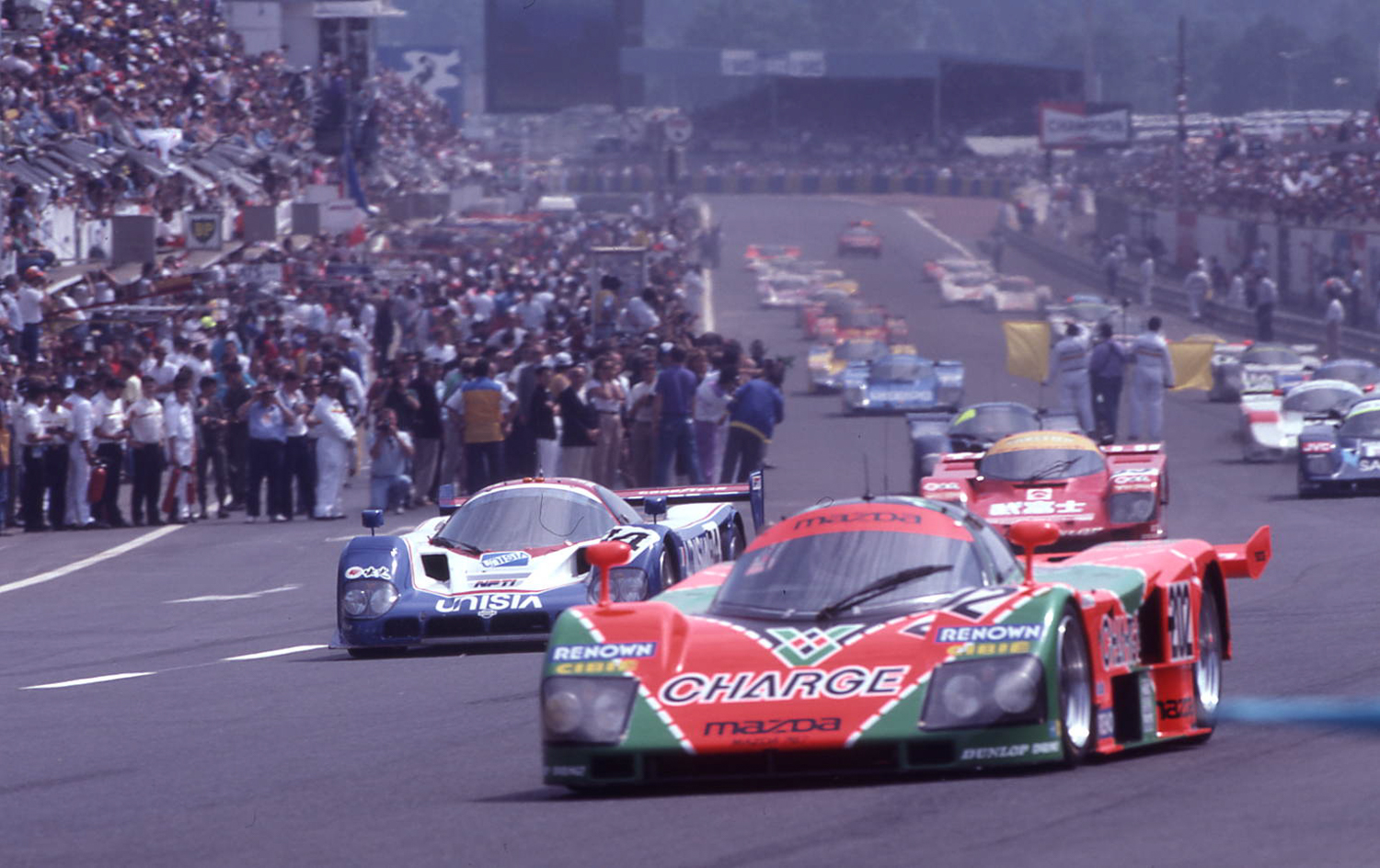
And in 1991 there was again serious development with the Mazda 787 developed into the new 787B, which featured a 25mm longer wheelbase, larger 18-inch wheels and carbon fibre brakes. The bodywork was revised for improved cooling and increased downforce. Two 787Bs were entered alongside a solo 787, with the second 787B finishing sixth and the 787 eighth. However, it was Mazda 787B chassis number 002 that went down in history with an incredible overall victory at Le Mans.

Commenting on the Mazda 787B, Johnny Herbert said: “the cabin of the 787B was beautifully laid out and comfortable, the rotary engine was absolutely fantastic” He remembers it as “silky smooth and bulletproof in terms of reliability” Adding, “Mazdaspeed was a very small team compared to the Mercedes and Jaguar teams but by 1991 the team was in perfect position because of the huge learning process in the previous years”.
For the fans at Le Mans in 1991 the overriding memory will likely be the incredible scream of the Mazda rotary engines and the flames licking from the exhaust at night as the trio of Mazdas raced through the darkness. For the hard-working rotary engine engineers from Mazda achieving the ultimate recognition of their work will live long in their memories, while the winning team was a truly international effort, with Mazdaspeed’s efforts assisted by the French ORECA organisation, while British chassis designer Nigel Stroud and Belgian team consultant six-time Le Mans winner Jacky Ickx played big parts in the success, too.
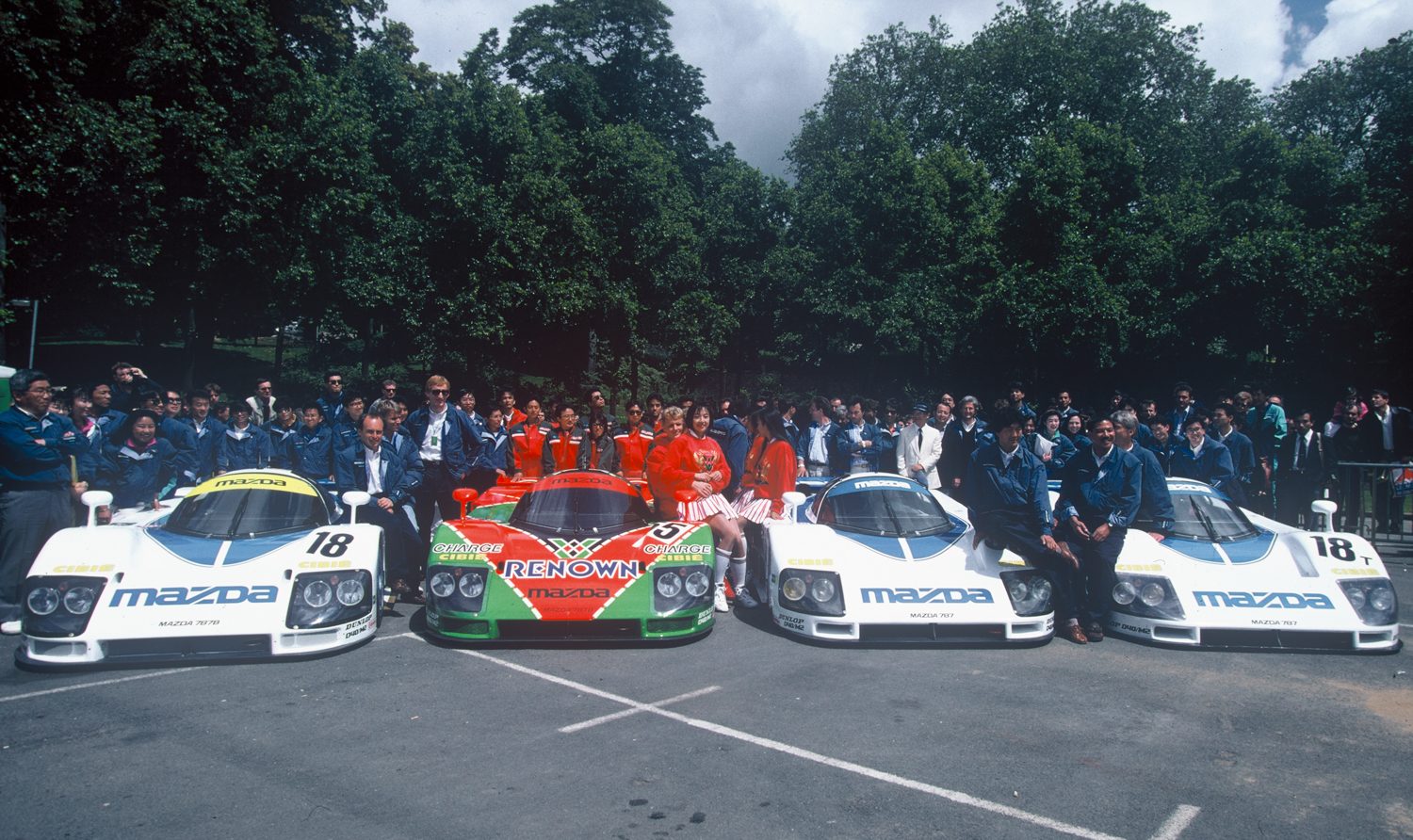
Helped by the bold livery of Japanese clothing sponsor Renown, the Le Mans winning number 55 Mazda 787B has become one of the most famous Le Mans winners. Immediately retired from competition after the race, Mazda 787B chassis 002 now takes pride of place at Mazda’s HQ in Hiroshima. Maintained in full working order it still captures the hearts of car fans the world over when it’s demonstrated.


